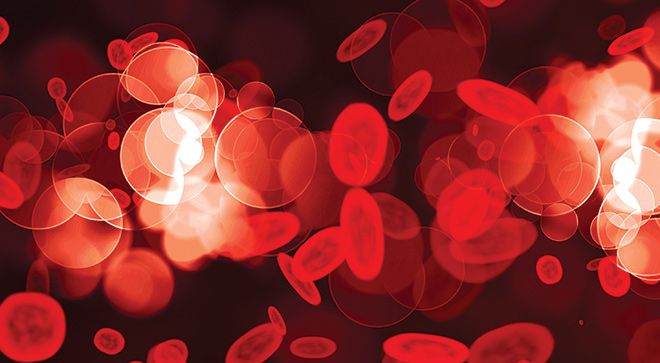How to Improve Nurse Responsiveness on an Inpatient Oncology Unit
An hourly rounding column helped make integrated data points more visible and improve nurse responsiveness on an inpatient floor.
Brianna Lutz, MSN, RN, OCN

An effective approach to improving nurse responsiveness on an inpatient oncology unit may be through a dot-centered hourly rounding column, according to findings presented at the 47th Annual Oncology Nursing Society Congress.
This hourly rounding column, which was rolled-out at Smilow Cancer Hospital at Yale New Haven, was designed in consideration of RNs’ and personal care assistants’ (PCA) preexisting workloads. The innovation does not add documentation to their workflow but rather makes preexisting data points more visible.
“We saw an increase on all 4 units in nurse responsiveness, simply by highlighting
how frequently a nurse and patient care associate patient load is seen within the hour,” lead study author Brianna Lutz, MSN, RN, OCN, said in an interview with Oncology Nursing News®.
Built into the patient list in EPIC, the flowchart uses colored dots to show which patients have been attended to in the past hour. A green dot indicates that patients have been attended to within the past hour, while a red dot indicates that it has been over 1 hour since they received nurse attention.
When conducting rounds, if a nurse documents on any of the following data points, the dot automatically turns green: vital signs, pain assessment intake/output, fall risk interventions, activity, ambulation, hygiene, positioning and Medical Administration Records documentation. A red dot immediately prompts the RN or PCA to conduct a targeted hourly round immediately.
For this implementation, targeted hourly rounding includes screening of a patient’s pain, position, proximity to personal items, toileting needs, and preferences, and is conducted by either a registered nurse or patient care association. Targeted hourly rounding is critical to both patient safety and patient experience. The Press Ganey was chosen as a metric of targeted hourly rounding since it measures performance of quality care using the indicator “Response of Hospital Staff.”
As of February 2021, all 4 involved units (hematology, medical oncology, women’s health, and surgery) experienced an increased in the monthly average responsiveness score after implementation of the hourly rounding column. The average monthly “N” for each unit, according to Press Ganey data, were 3.5 (hematology), 4.8 (medical oncology), 45.3 (women’s health) and 53.6(surgery). In addition, staff have expressed satisfaction with the system and appreciate for the ability to visualize hourly rounding status and streamlined documentation.
“Historically, we have 4 separate siloed units. Historically, their first Ganey scores for responsiveness are on the lower side,” Lutz explained. “However, by implementing the hourly rounding column, we were able to have a real time visualization of the number of times that nurses and our patient care associates were in the room every hour without adding any burden to their workflow.”
Of note, the team created an instructional video explaining the rationale and goal of the implementation staff so they would understand that this was not a punitive action.
“The video was crucial, because we actually did see that some nurses in inpatient units felt like [this intervention] was a little bit punitive,” Lutz said.
“[They worried] that if their nurse leader saw that 3 out of 4 of their patients were red [dots], that they were in trouble or that they were lagging behind in their workflow,” she added. “We showed that video at safety huddles, and staff meetings across the 4 inpatient units. That small group of us who had worked on the project [shared the video] with the end users, so we did not have to rely on a middleman to the purpose and the intention. That was very important.”
Thus far, feedback has been positive, she added. Moving forward, broader implementation of this system may be appropriate across more units and systems.
“Our team of the oncology cluster and our EPIC analysts were really crucial and working collaboratively with kind of all of those key stakeholders was really helpful,” she said. “We are working now to roll this out beyond the oncology service line; it really has utility for all patient care levels and doesn't need to be siloed just to oncology.”
Reference
Lutz B, Crouch L, Sanchis D. Improving nurse responsiveness on inpatient oncology units. Presented at: 47th Annual Oncology Nursing Society Congress; April 27-May 1, 2022; Anaheim, CA. Abstract 220.
Workflow, Educational Tools Improve Use of Silicone Film to Prevent Radiation Dermatitis
April 25th 2024Tools to educate oncology nurses and patients on the use of Mepitel film to prevent radiation dermatitis has improved the workflow around its introduction to patients with breast cancer, as well as its application and maintenance.
Olaparib Plus Chemo May Not Improve Outcomes vs Chemo Alone in BRCA Wild-Type TNBC
April 23rd 2024Patients with BRCA wild-type triple-negative breast cancer treated with olaparib on a gap schedule with chemotherapy did not experience improved responses compared with chemotherapy alone in the neoadjuvant setting.




